Simple (and Cute) Tricks to Teach Your Dog
Are you looking for effective and adorable ways to train your best buddy? Training your dog not only builds a stronger bond between you two but also ensures a well-behaved, happy and fulfilled companion. From essential commands that can aid in day-to-day training to cute poses for that awesome IG pic, here are some simple ideas that will make training sessions both enjoyable and productive for you and your canine companion.
Paw/High 5
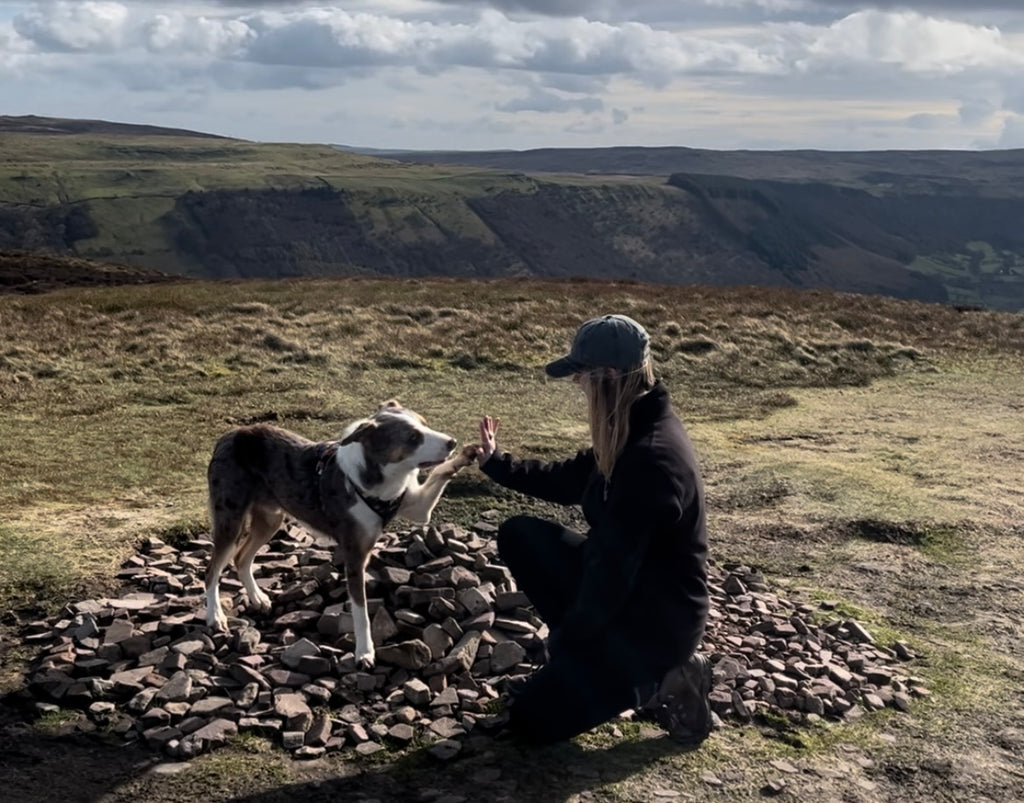
For this trick, you'll allow your dog to make their own decisions about what to do in a scenario, and mark and reward as they get closer and closer to getting it right.
1. Grab your dog's favourite treats, and hold your hand out in front of your dog, as though you're asking for their paw.
2. See what they do next. They might paw at your hand straight away, in which case, mark and reward. You can use a verbal marker ie "yes" or a clicker. If they sniff at your hand, give them a bit more time. Eventually, after trying a few different things using their brain, they should eventually touch your hand with their paw. Ensure you mark and reward this.
Top Tip: If they don't quickly touch their paw to your hand, mark and reward for the closest thing they do this, even if it's just slightly lifting their paw up. Even if you have to move your hand closer towards their paw to encourage the behaviour. Eventually, you keep rewarding as they get closer and closer to your hand and they'll eventually get there!
3. This next step is about building duration! Once they have got the hang of putting their paw in your hand, don't mark and reward until they leave it there for a little bit longer. Some dogs do this step a bit quicker than others. Just work with your dog, if they are very fast and excitable, mark and reward if they keep their paw there for even half a second longer than time before. Some dogs will just get it straight away, and can increase duration very quickly and easily.
4. the final step is adding verbal cue. Most dogs learn visual cues much quicker than verbal, so by this stage they should recognise your hand out as a the visual cue to give you paw. Introduce the verbal cue by saying your word of choice, usually "paw" and then holding your hand out, and when they give paw, mark and reward again. After a few repetitions, they will respond to just the verbal cue, with or without the hand out.
5. Most importantly, have fun! They don't need to do every step in one session or one day if they're slower to pick up on it. And, they don't ever need to do it all if they aren't comfortable with it. Some dogs don't like their paws touched, and this is ok too! Remember, trick training is only fun if both of you are enjoying yourselves.
To turn a paw into a high 5, once they're confident with standard paw, just hold your hand in the high 5 position and ask for paw again - they should just reach up and tap your hand with their paw straight away!
Wave
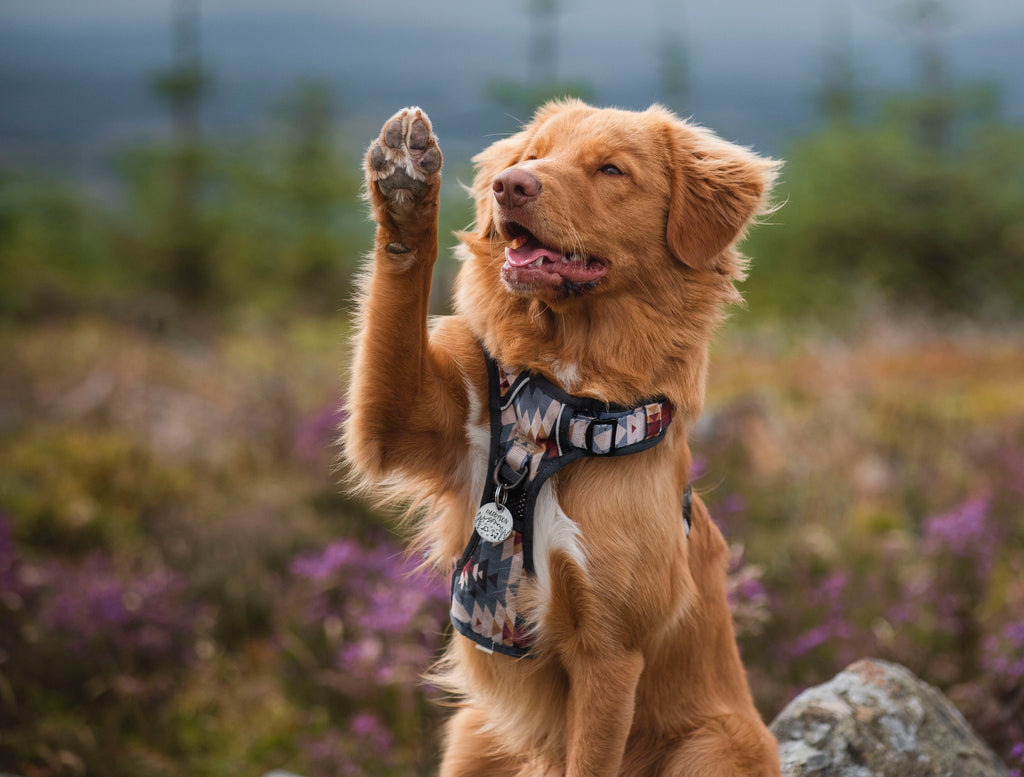
We think wave is one of the cutest tricks for photos! Wave is a very easy trick once your dog knows high 5, and we recommend getting them to grips with paw/high 5 before trying this one!
1. Grab your dog's favourite treats - hint, this is likely always going to be the first step!
2. Ask your dog to sit, and then step back a bit, so you're not quite in touching distance for your dog. If your dog does not have the best wait or duration for their "sit" command, we recommend getting this down first.
3. Cue your dog for a high 5, holding your hand at the same height, but just a few cm back from where you normally do for a high 5, so your dog's paw is in the air, reaching up towards your hand but not touching it. Mark and reward.
4. For this trick, you need to build distance as well as duration. This means it can take a little longer than just training for duration, but it's usually still a simple process. Repeat step 3, this time a tiny bit further away from your dog. Keep marking and rewarding the further and further away you get, until you can ask from a distance. You can start adding the new cue in at this stage, just say your new cue before your "high 5" cue, and after a few repitions, your dog will likely chain the events and give you a wave just from you saying "wave". Once you are here, you can stop using your paw/high 5 cue at all for this trick, and just use "wave"
5. Once you have distance, start adding duration! This should be a little easier than with paw, as they already understand duration from the previous trick. As before, just mark and reward for any extra duration you get, even in the smallest increments if needed.
Touch
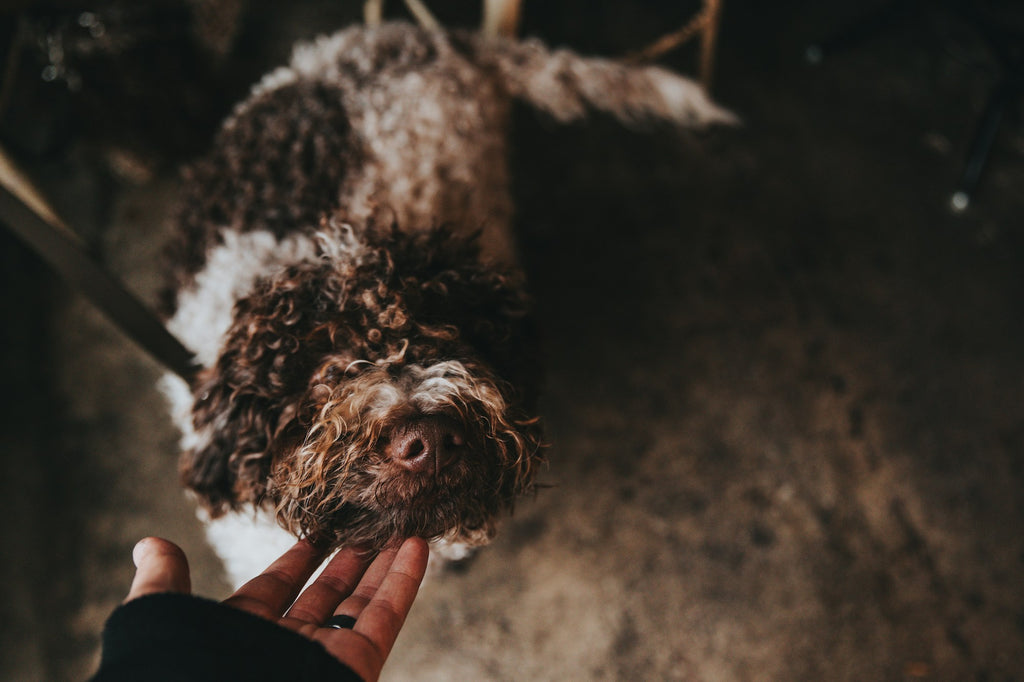
Touch is one of the easiest tricks to teach a dog, and one of the most valuable. It is easy because it utilises your dogs natural instincts, and all you need to do is "capture" the behaviour by marking and rewarding, and you're there! This one doesn't need any duration or distance (unless you want it to have duration - your choice).
1. (Come on, you know it by now....) Grab your dog's favourite treats!
2. Hold your hand out in front of your dog. How you want to hold your hand is your choice, some people choose 2 fingers flat, others a flat palm. It'll very likely be your dogs natural instinct to run towards your hand to sniff it, inadvertently touching your hand with their nose. Mark and reward this.
3. Repetition! Most dogs very quickly pick up on this and come to a fast realisation that nose touching hand = reward
4. Reward! Reward! Reward! If you make the associations that this easy movement always = treats, it can be a strong tool for all aspects of your training. Need your dog to focus on you if they're fixating on something shouldn't be? Touch! If your dog is being silly and not listening to their recall? Ask for touch! Then pop them back on a lead while they're close. This is a brilliant foundation exercise for all dogs.
Selfie
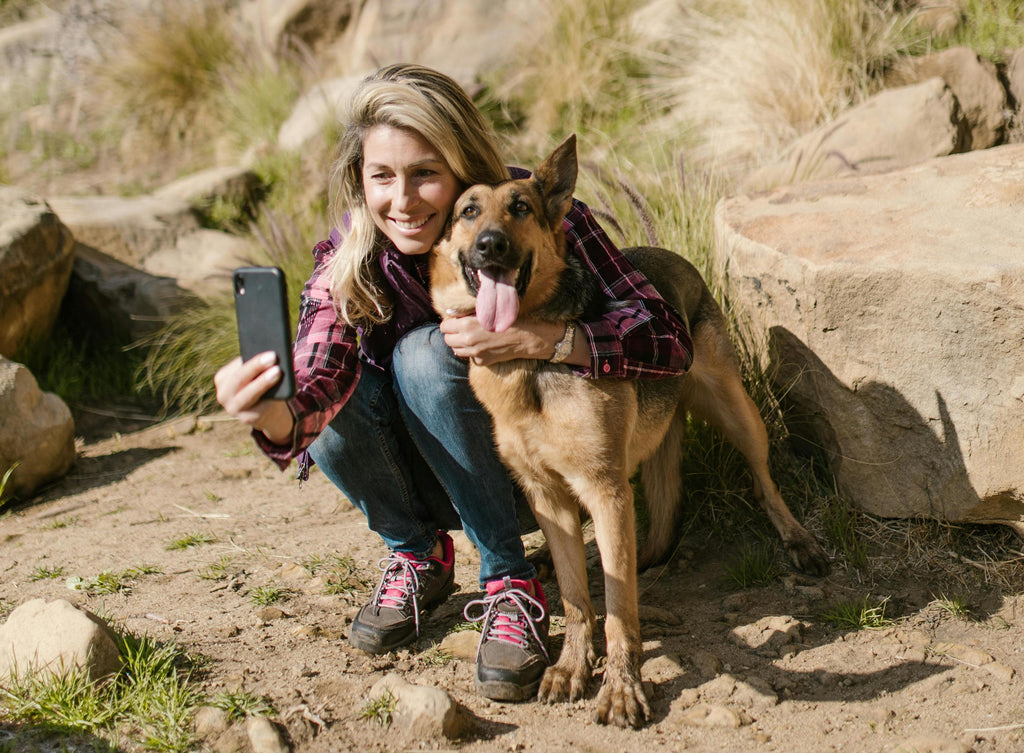
Selfie involves your dog popping their head over your shoulder for a selfie pic! A VERY cute pose for sharing on socials and a fun and simple trick to teach!
1. Grab your dog's favourite treats - again!
2. Sit down on the floor with them, and use a stinky treat to lure them around you so they're behind you. Try and ensure you only use the opposite hand than you take your selfies with for this so you can put it to use in the real world!
3. We recommend using a mirror or holding out your phone with the selfie camera on for this step. Lure your dog forward from behind you, slowly, and so their head is exactly where you want it for the photo. Once they are "positioned" exactly where you want them, mark and reward.
4. Repetition again! Most of trick training is all about repetition. Keep going with the luring, and when they're reliably landing in the correct position every time, you can add in your cue. Say your cue, lure their head, and then mark and reward.
5. When your dog is confidently getting it right, try and phase out the lure. Use your cue, and if they put their head into position, mark and reward. More repetition!
6. The end goal should look like you saying your cue "Selfie!" and your dog will come behind you and pop their head over your shoulder exactly as you've been practicing!
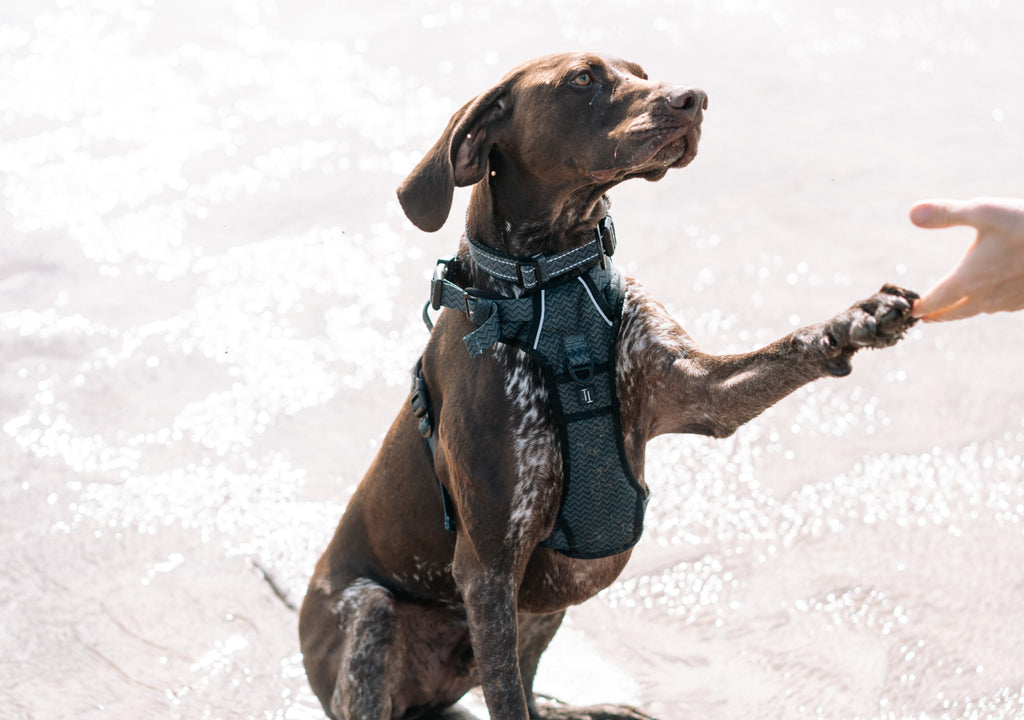
Extra Tips
- Don't worry if your dog doesn't get all the way there in the first session! Trick training sessions should only be 2-10 minutes long each time (depending on how long your dog can concentrate for) if they aren't progressing, take a break and come back to it later!
- Keep things positive and happy always when training tricks! This should be a fun bonding experience for you and your dog. If your dog isn't "getting it" and you find yourself getting frustrated, just stop there and have a play session and a break!
- Dogs are typically visual learners and will understand a visual cue before they learn the verbal cue. When possible with training a trick, have some sort of visual cue or hand signal first and once they've got that, a verbal cue is easy to add later on.
Let us know in the comments if you try any of these tricks, which one was your favourite, and which did your dog enjoy the most?
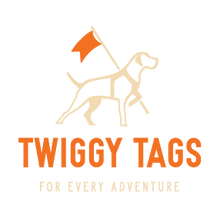








Leave a comment